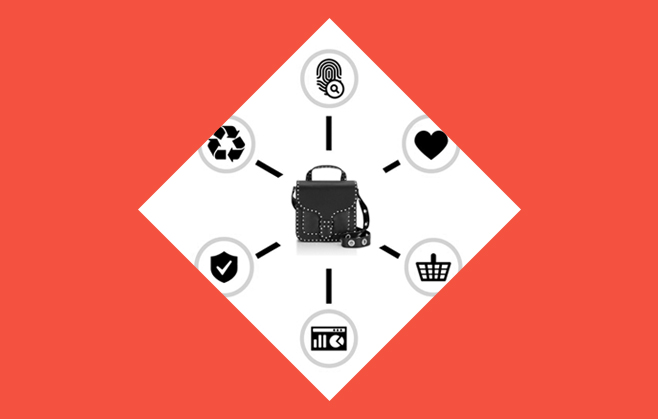
Fashion week: From digital shows to wearable tech
The fashion industry has continued to find innovative ways to evolve when it comes to pleasing its tech-savvy consumers. From VR to style-led wearables, which new projects have been launched at Fashion Week this year?
Ever a leader when it comes to the latest digital trends, designer Rebecca Minkoff created a new collection of “connected” handbags, entitled “Always On”. Each one of the limited edition pieces automatically enters the wearer into the brand’s customer loyalty programme, lets them receive exclusive offers, product and styling advice, online style sessions, and an invitation to the upcoming fashion show. Rebecca Minkoff has long been an advocate of fusing tech with fashion- her previous runway shows famously included drones and shoppable runways, enabling customers to purchase her designs straight off the catwalk.
Futuristic clothing once again took centre stage, with some incredible designs from the likes of H&M, who collaborated with Google for their latest tech project, “Coded Couture”. The brand’s digital fashion house, Ivyrevel, partnered with the tech giant in order to create dresses tailored to the wearer’s personal data- each dress will be custom designed to reflect the customer’s average temperature and weather in their area, while the fit might be adjusted to accommodate personal activity levels. Design-wise, the dress’s embellishments take the form of “map-like” routes depicting the wearer’s typical journeys. Before the customer’s dress is designed, he or she must use Google’s accompanying app, through which their daily activities, location and routine are monitored for one week. Dresses are then able to be ordered via the app, with the customer allowed to choose one for day-wear, parties, or other occasions of their choice. Other designers were also keen to imbue their clothes with tech-centric details- luxury New York label Ab Screenwear, for instance, showcased shiny holographic jackets containing panels through which the wearer can use his or her smartphone touch screens.
Presentations this year have been equally as inventive. Samsung for instance, collaborated with fashion production firm, FTL Moda, to produce a 360-degree catwalk experience. At New York Fashion Week, the company enabled fashion designers including bridal designer Limor Ben Yosef, eco-conscious Indian designer Premal Badiani, and German designer Sonja Tafelmeier, to have their presentations seen through Gear VR headsets. Viewers were treated to a virtual reality experience drawing on the theme “Dreaming of Italy”, in which they were able to view and engage with each designer’s collection at leisure. Prior to the viewing, collections had been shot in Milan the previous week, set to the city’s surroundings and a museum-like backstage setting.
This year, it’s clear that fashion is becoming all about providing ease for both consumer and designer. With fashion presentations able to be videoed ahead, there is less pressure on designers to stage live shows, while consumers are able to view garments up-close and from all angles, without any restriction. And as H&M demonstrated, technology is enabling a move away from mass production, with clothes produced on a made-to-order basis- this ensures less waste, resulting in a more economical style of clothes production in future. Wearable technology combined with fashion pieces, as shown by Rebecca Minkoff also shows fashion’s progression towards meeting the demands of the digitally-savvy consumer- those who want their items to be useful additions to their connected lives.
Did you catch any of the shows this season? Which digital displays and projects did you most admire? We’d love to hear your thoughts as always, so please tweet to us @PracticeDigital and share your comments on our Facebook page.




